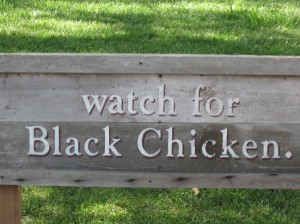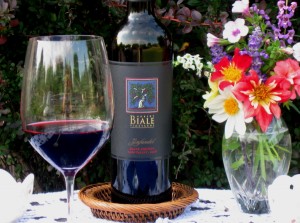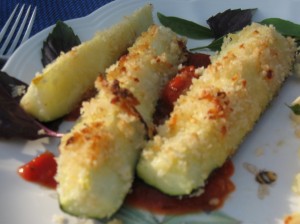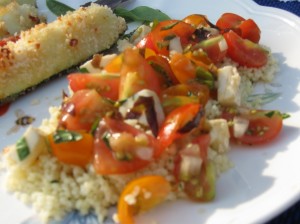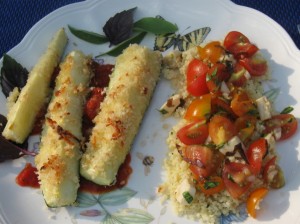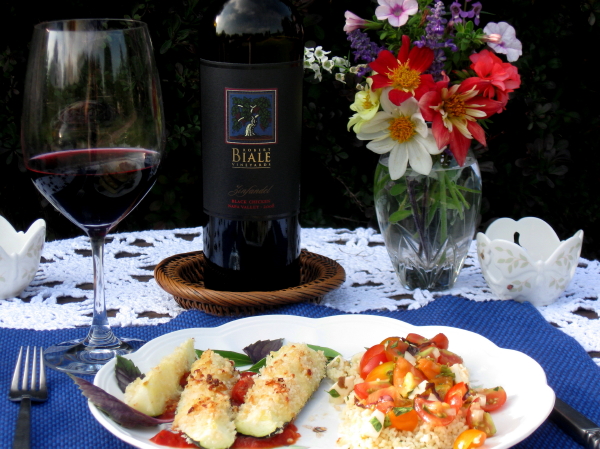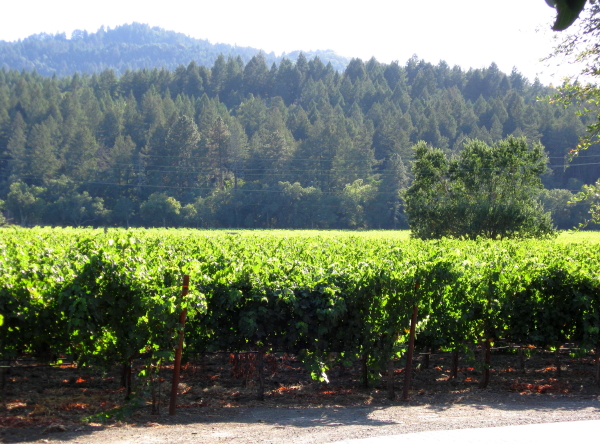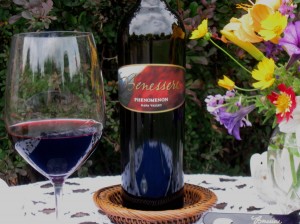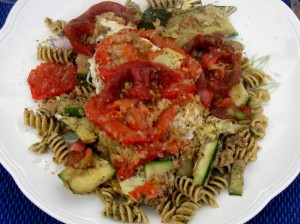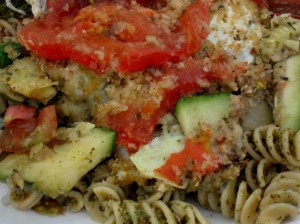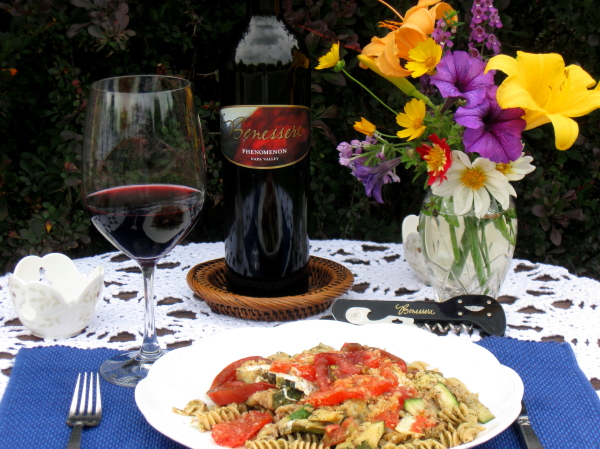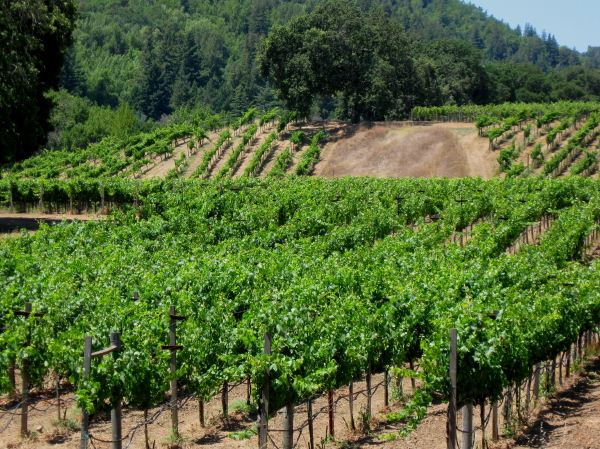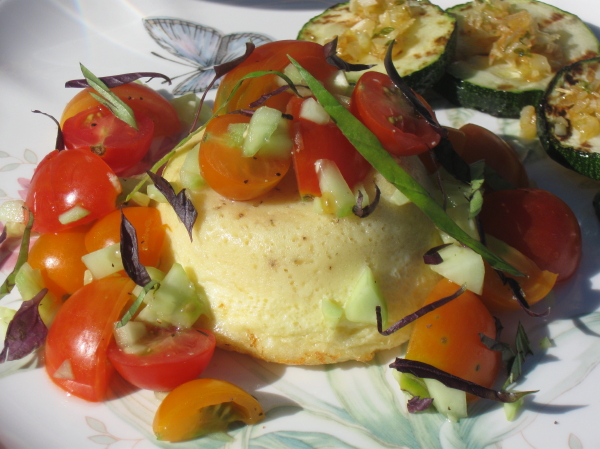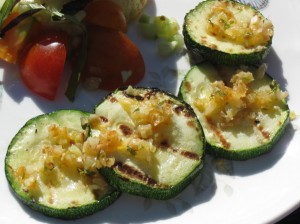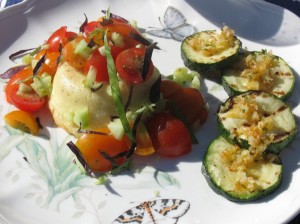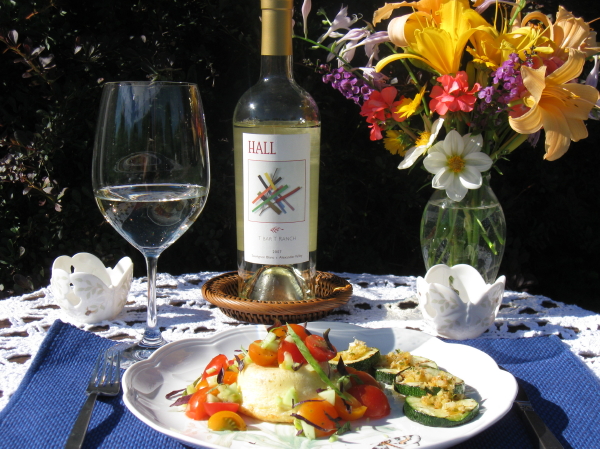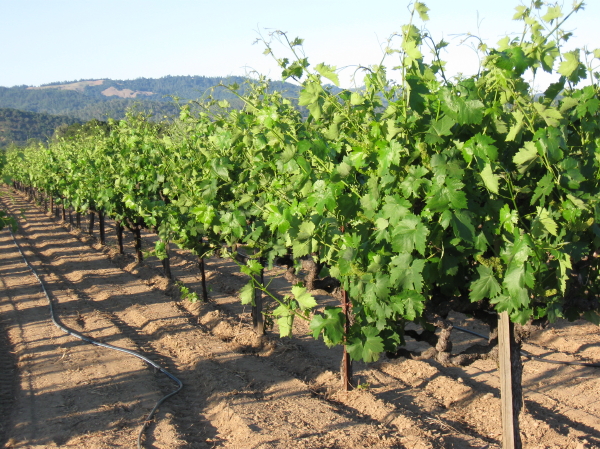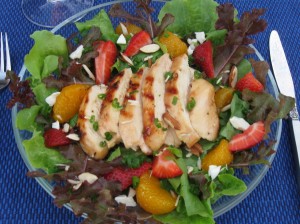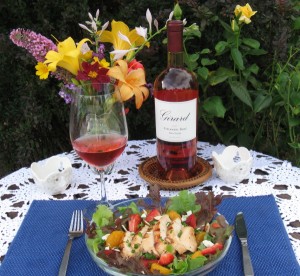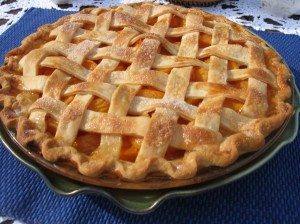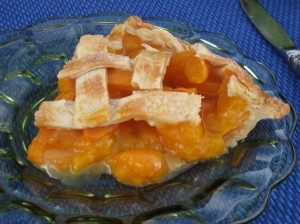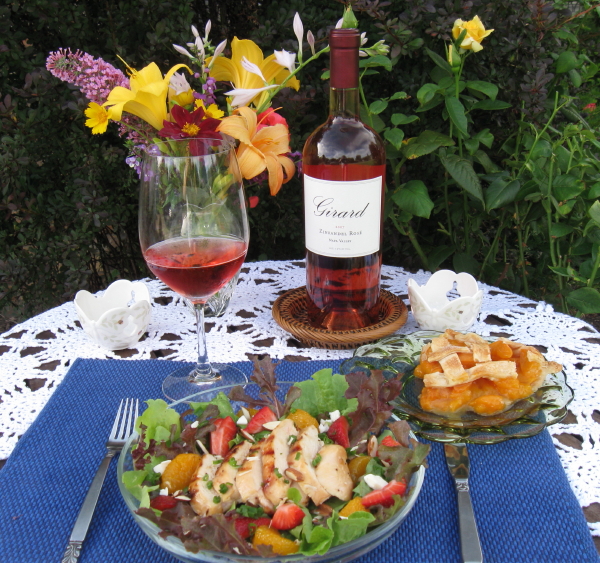Jul 28 2010
Kicking Back With Colombard
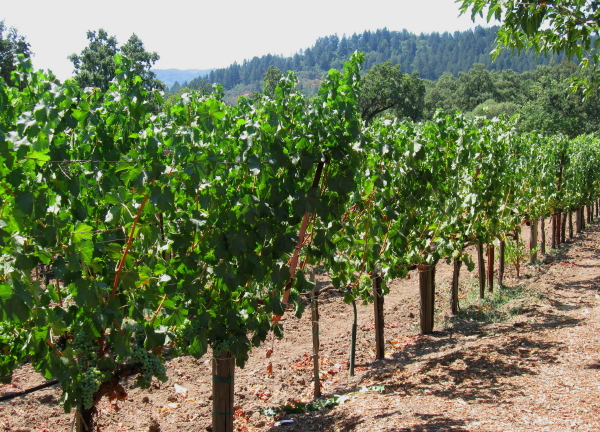
Summer continues to perplex much of the nation. The majority of the country continues to belabor under the stronghold of a crippling heat wave; yet California’s Bay Area and Napa Valley pass each day with cooler than average temperatures. No matter the weather that you may be experiencing, Colombard can be delightful in any summer setting.
Colombard, or “French Colombard” as it is referred to in California, is a white wine that may sound exotic but is far more familiar to the palate than one may originally think. In the 1970’s, when California discovered that French Colombard would grow well in its climate due to the grape’s ability to thrive in heat increased its plantings and continued to do so well throughout the 1980’s. While the grape can be made into its own singular varietal, today it is commonly found in California as a blending grape in other white wine. The grape itself produces a wine that is moderately dry, has well-balanced acidity and is often described as spicy with floral qualities. Its qualities are not as showy as other white wines, yet nevertheless, if it is made well it can be the perfect dining companion during hot trying summer months.
In addition, if the grapes hail from old vines in addition to the wine later being made well, then the connoisseur’s palate is in for a poetic treat. Casa Nuestra Winery (“Casa Nuestra”) in Napa Valley is fortunate to have old vines of French Colombard on its vineyard estate and to add a unique twist to this misperceived obscure grape, the winery produces it in the form of a late harvest dessert wine. “Late Harvest” is a wine term which means (as it implies) that the grapes are picked towards the end of the harvest, when they are very ripe and have a high sugar content (with a minimum of 24˚ Brix). This sugar content can be even higher if the grapes have been infected with a desirable fungus known as Botrytis Cinerea, which causes the grape to shrivel but in doing so concentrates the sugar (note, “Select Late Harvest” will have a minimum 28˚ Brix and “Special Select Late Harvest” will have a minimum 35˚ Brix). The higher the sugar content, the more likely that the Late Harvest dessert wine in question will have a rich, deep honey flavor. Again, Casa Nuestra’s dessert wine is a “Late Harvest French Colombard”, made from old vines located at the winery’s Oakville estate, which denotes that while the wine will have a higher Brix, it will not be characterized by an extremely honeyed quality.

Pouring the 2008 Late Harvest French Colombard into a small dessert wine glass, the nose is aromatically floral with notes of fresh citrus or nectarine blossoms. While some white wines may have a floral bouquet reminiscent of spring, this floral nose is more in line with fruit tree blossoms and compatible with summer months. Taking in the aromas, images of outdoor brunches on sunny lazy Sunday afternoons are invoked. The palate is greeted by a sweet white wine that is not overly sugary, but instead akin to light white peach (or even apricot) nectar with gentle spiced notes offering subtle richness in flavor (yet devoid of blatant deep honeyed notes, as the wine should be).
Given that the wine offers a distinct sweetness, its food pairing must be taken into careful consideration. The wine offers a lovely present balanced acidity which also factors into the planning of the pairing’s recipe. As a result, this week’s menu hosts:
· Strawberry-Pecan Chevré Pizza
Ginger kissed strawberry slices adorn a honeyed whole wheat pizza crust. A delicious honeyed chevré embraces warm strawberries with bits of warm pecans as the pizza bakes.
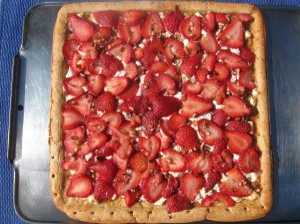
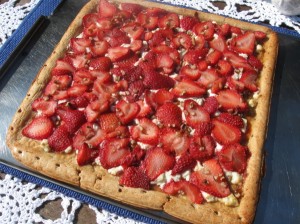
Once ready to serve, slices of the Strawberry-Pecan Chevré Pizza are dressed with julienned slivers of garden-grown chocolate mint.
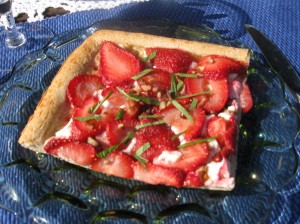
Is it dessert, is it brunch or is it just plain “good”? The answer is simply, “all of the above” as the dish successfully proves to be light summer entertaining fare. Romantically aromatic, the pizza surprises the taste buds of guests as its honeyed whole wheat pizza crust adds a bit of depth and an earthy quality with a dash of simple commonality to help keep the sugar content of the dish in check. It is sweet, yet not overly sugary, as concentrated fruit flavors spill forth. Fruit alone paired with the 2008 Late Harvest French Colombard might overpower the wine (unless it is a medley of certain melon), so in this respect, again, the honeyed whole wheat pizza crust adds an essential component.
This creative pairing surprises guests and delivers pleasant reactions. It is a terrific showpiece dish which captures the beauty of summer strawberries yet demonstrates creative versatility in how they can be served. Served alongside a pleasantly floral Late Harvest French Colombard satisfies a sweet tooth without saturating the palate. Accompany this fare with summer weather (no matter the temperature) and all smile with a slice of summer splendor.
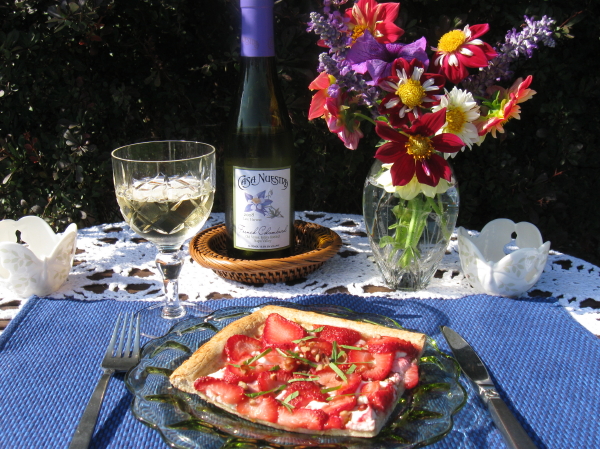
Comments Off on Kicking Back With Colombard

